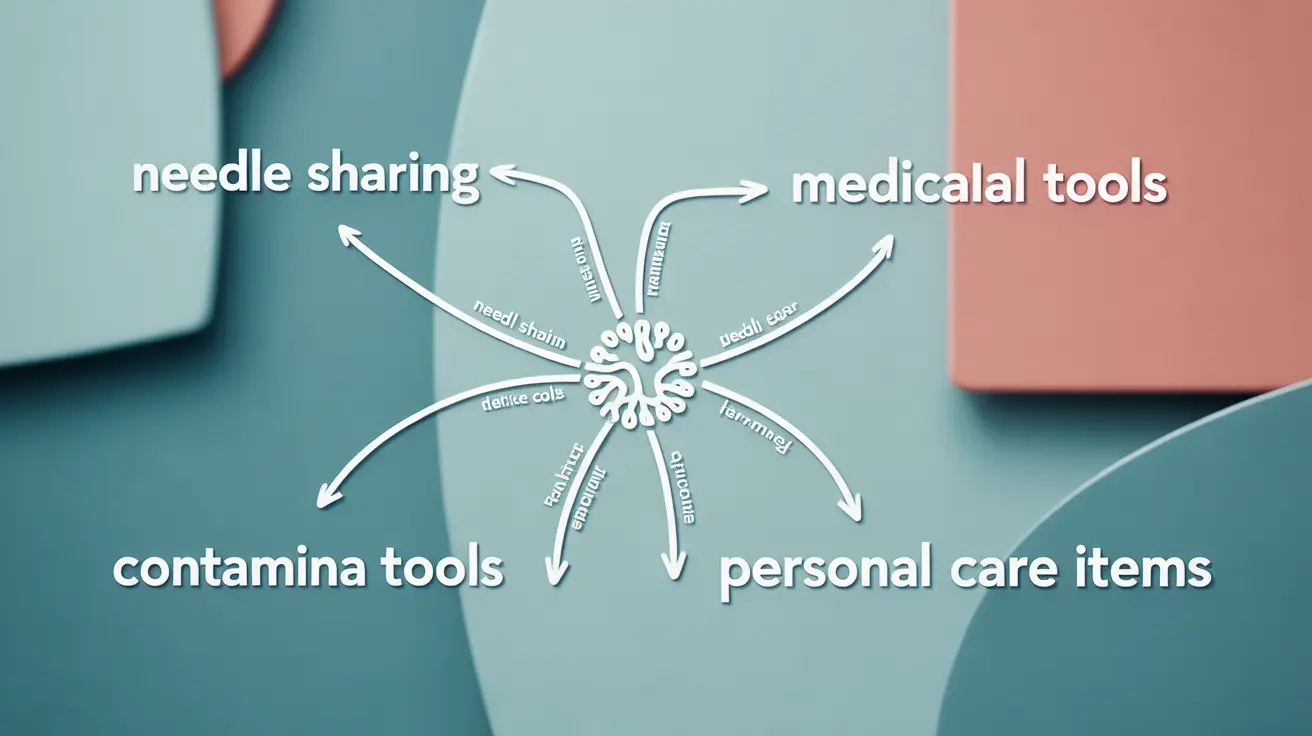Understanding how hepatitis C (HCV) spreads is crucial for preventing infection and managing anxiety about potential exposure. While many people worry about transmission through casual contact like kissing or sharing drinks, it's important to understand the actual risks associated with saliva exposure and hepatitis C transmission.
This comprehensive guide will explore the relationship between hepatitis C and saliva, examining various transmission routes and providing clear guidance on risk factors and prevention strategies.
Understanding Hepatitis C Transmission
Hepatitis C is primarily transmitted through blood-to-blood contact. The virus needs to enter the bloodstream directly to cause infection, which is why certain activities carry a much higher risk than others. While the hepatitis C virus can be present in saliva, the concentration is typically too low to cause infection through casual contact.
Common Methods of Transmission
The most common ways hepatitis C spreads include:
- Sharing needles or drug injection equipment
- Needlestick injuries in healthcare settings
- Receiving blood transfusions or organ transplants before 1992
- Being born to a mother with hepatitis C
- Using improperly sterilized medical or dental equipment
Saliva and Hepatitis C Risk
The risk of transmitting hepatitis C through saliva alone is extremely low. However, certain circumstances may increase the risk of transmission through oral contact:
Blood Presence in Saliva
If blood is present in saliva due to:
- Bleeding gums
- Mouth sores
- Recent dental procedures
- Oral injuries
These situations could potentially increase the risk of transmission if direct blood contact occurs.
Personal Care Items and Risk
While saliva alone poses minimal risk, sharing personal care items that might have blood on them can be dangerous. Items to avoid sharing include:
- Toothbrushes
- Razors
- Nail clippers
- Any items that could cause breaks in the skin
Sexual Transmission and Intimate Contact
The risk of sexual transmission of hepatitis C is generally low, but increases if:
- There are open sores or cuts present
- During menstruation
- When engaging in rough sexual activity that might cause bleeding
- In the presence of other sexually transmitted infections
Prevention Strategies
To minimize the risk of hepatitis C transmission, consider these preventive measures:
- Never share personal care items that could have blood on them
- Use barrier protection during sexual activity
- Ensure proper sterilization of medical and dental equipment
- Practice good oral hygiene to prevent bleeding gums
- Avoid sharing drug use equipment
Frequently Asked Questions
Can hepatitis C be transmitted through kissing or sharing saliva? The risk of transmitting hepatitis C through kissing or sharing saliva is extremely low. Transmission would typically only be possible if blood were present in the saliva due to cuts, sores, or bleeding gums.
What are the main ways hepatitis C spreads from person to person? Hepatitis C primarily spreads through blood-to-blood contact. The most common transmission routes include sharing needles, needlestick injuries, blood transfusions before 1992, and mother-to-child transmission during childbirth.
Is it possible to get hepatitis C from sharing razors or toothbrushes? Yes, sharing personal care items like razors and toothbrushes can pose a risk for hepatitis C transmission because they may have microscopic amounts of blood on them. It's important to keep these items for personal use only.
How likely is hepatitis C to be transmitted through sexual contact? Sexual transmission of hepatitis C is relatively uncommon but possible, especially if blood is present or there are cuts or sores. The risk increases with certain sexual practices that may cause tissue damage or bleeding.
What precautions can I take to prevent hepatitis C infection in everyday life? Key precautions include avoiding sharing personal care items, using barrier protection during sexual activity, ensuring proper sterilization of medical equipment, and never sharing drug use equipment. Maintaining good oral hygiene and avoiding direct blood contact with infected individuals are also important preventive measures.




